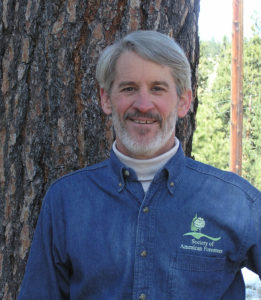
I hope you’re having a wonderful autumn, including time in a forest, whether an urban or a more remote one. I have been traveling a lot during the past month, for Treesource and personal enjoyment. One was a nephew’s wedding in Connecticut, held outside on an old farm/forestead. It was a beautiful setting; the leaves were just starting to turn, giving a hint of fall colors to come.
I also attended the North American Forest Partnership meeting in Atlanta and had the opportunity to connect with some of the 115 different organizations that are partners, including The Nature Conservancy, Choose Outdoors, U.S. Forest Service, Rayonier, Eastman Chemical and Enviva, along with many others. Some I am working with to plan stories for 2019 and others provided ideas for future stories.
I also attended the Society of American Foresters annual convention in Portland, Oregon. I met a number of interesting people and companies that generated more ideas for potential stories that center around the triple bottom line of balancing the environmental, economic and social needs of society. There were hundreds of presentations, many more than I could cover, including urban forest management; wildfire and fuels management; the effects on wildlife habitat from the retention of dead, live and down trees; and a variety of wood products. It was a very stimulating time with many topics Treesource hopes to incorporate into stories in the future.
I can’t resist sharing two items that are new in the marketplace that I think you will find interesting.
One is a beautiful new clothing fiber made from cellulose called Naia. This material achieves the fashion industry’s ideal of easy care (washer and dryer), beautiful feel and look and durability. It also has a great sustainability story, in that it is from a renewable source, wood, and is biodegradable, including the option to put it in a compost bin when it is worn out. I want to do a whole article on things we as consumers need and use every day that can come from renewable sources like Naia.
The second was a machine made by ROI that converts waste wood, like broken pallets or the branches and tops of trees, to biochar with minimal pollution compared to open burning or burying in a landfill. The biochar becomes a useful product as a water filter, or as a nutrient capture tool that can help protect groundwater and then be used as a fertilizer. And it stores carbon for hundreds to thousands of years. Biochar and its uses is another future article that is in the queue.
Enjoy this week’s new series of stories or Treesource, including a Brian Cooke’s detailed look at efforts to bring back the longleaf pine, and have a wonderful fall season.
Dave Atkins

Leave a Reply